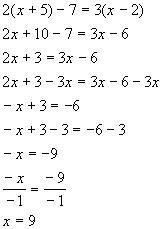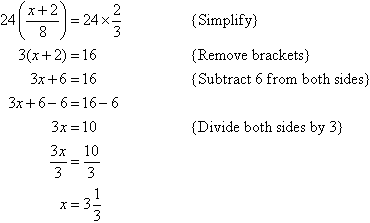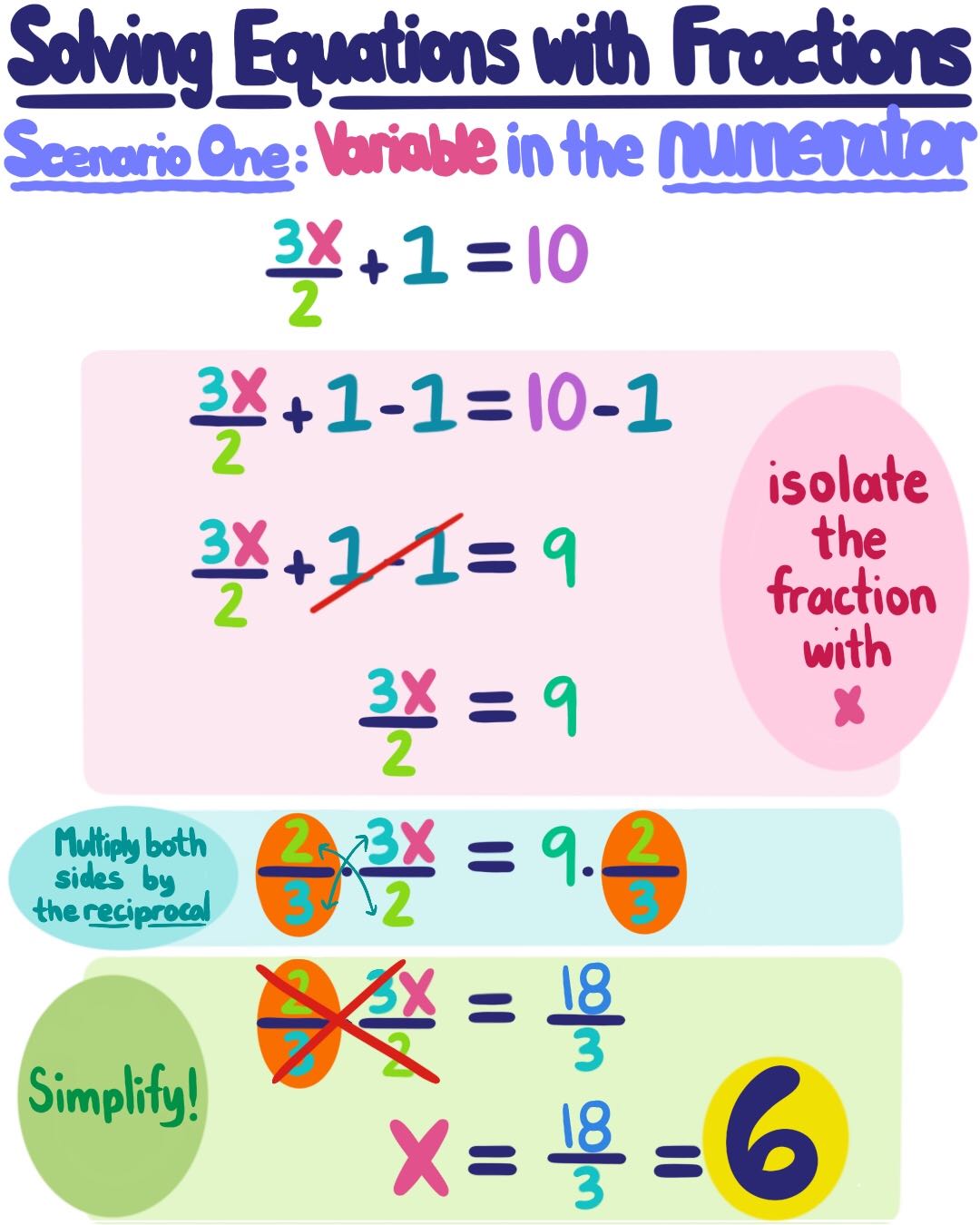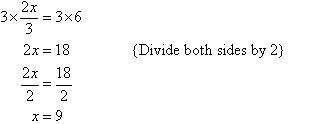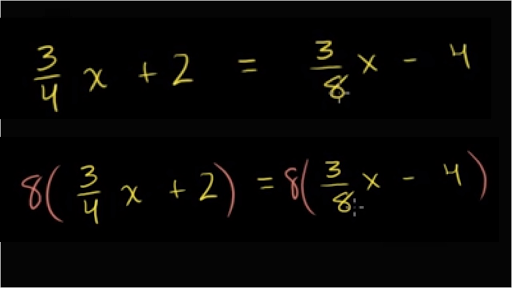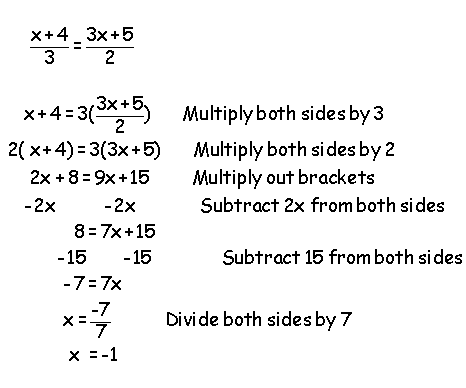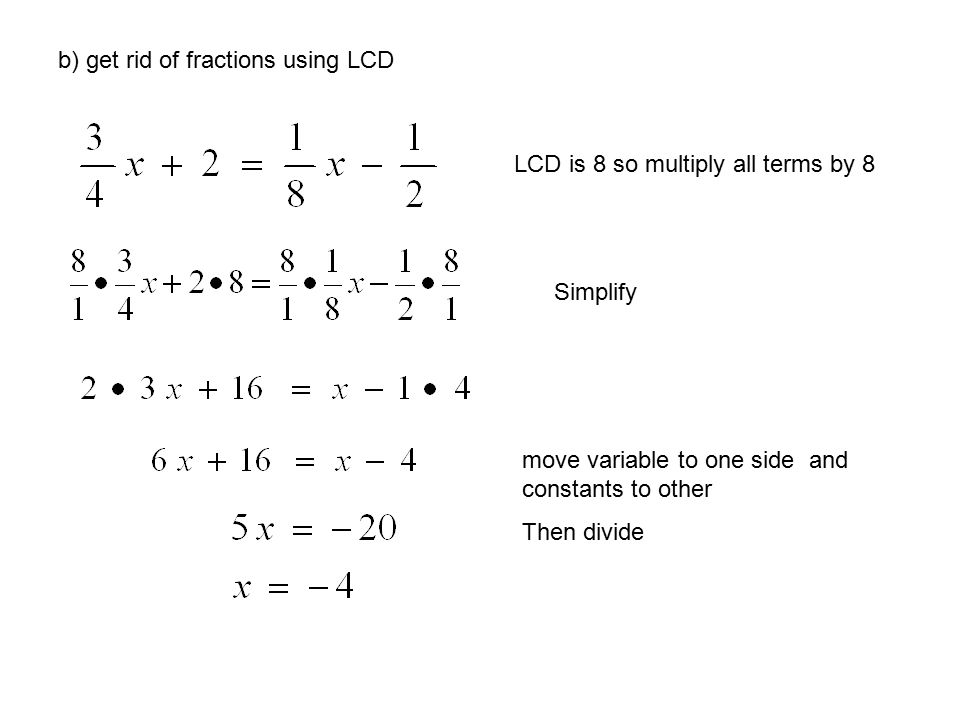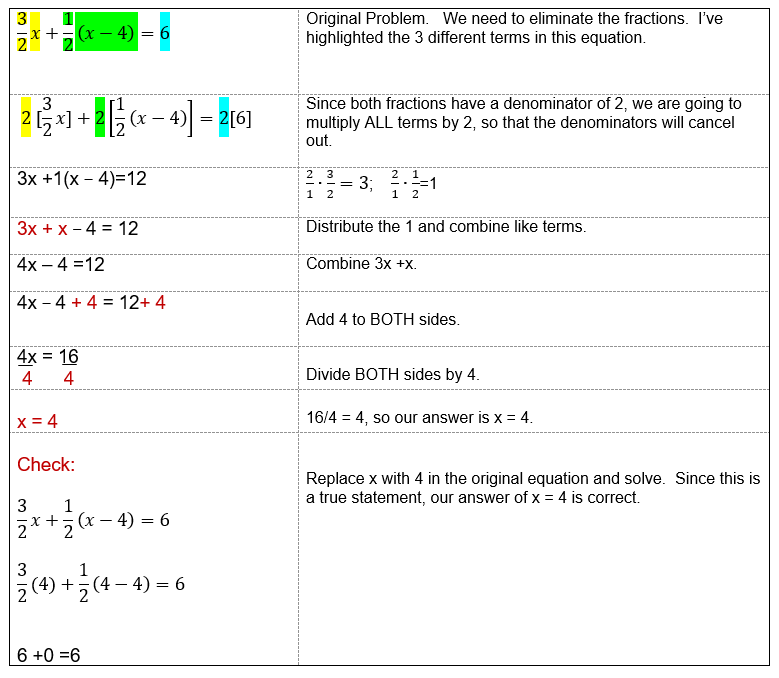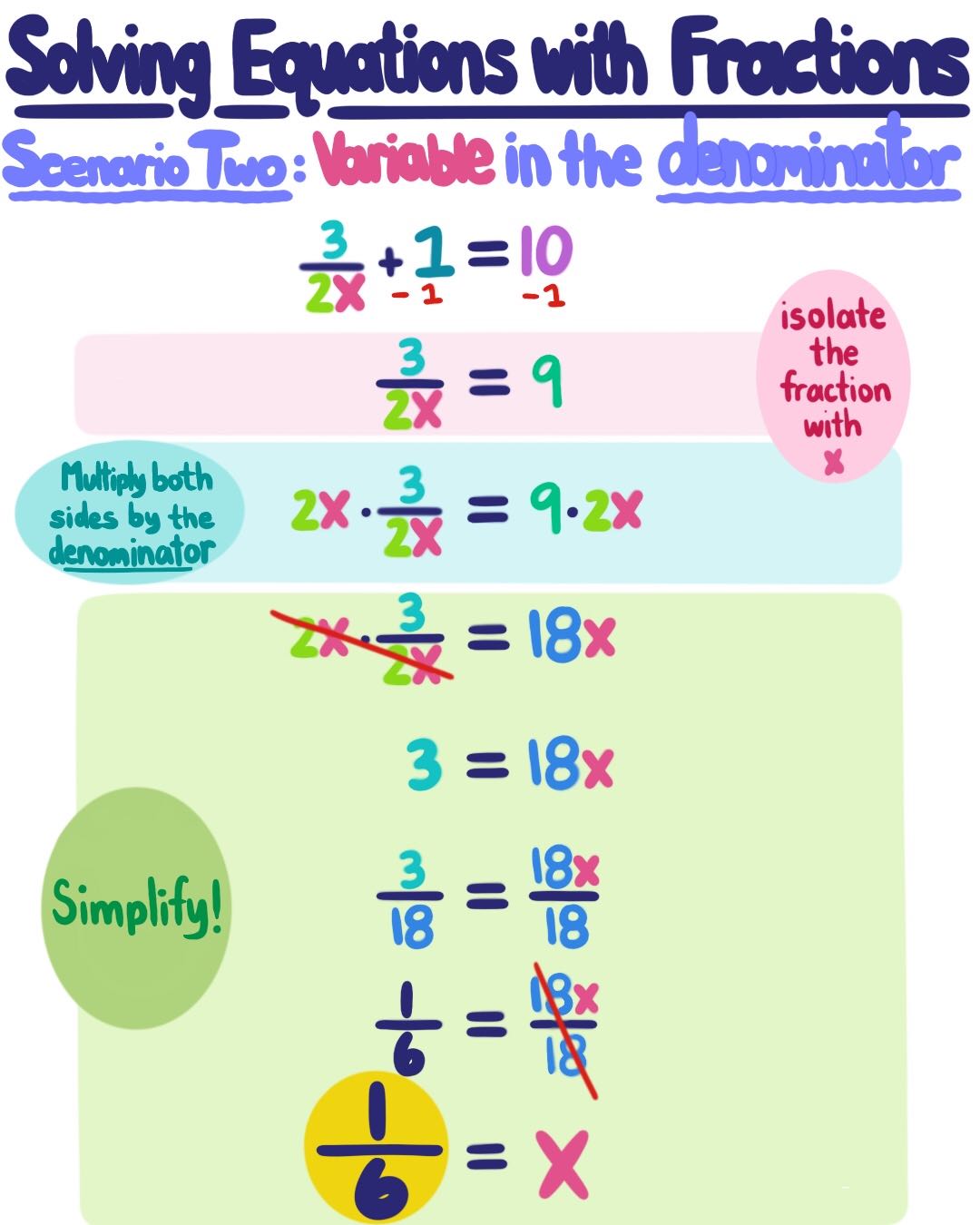Awesome Tips About How To Get Rid Of A Fraction In An Equation
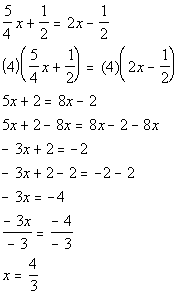
To clear a fraction from an equation, multiply all of the terms on both sides of the equation by the fraction’s denominator.
How to get rid of a fraction in an equation. This time we perform the calculations mentally. A logarithm is the inverse of an exponent. Isolate the variable terms on one side, and the.
Find the least common denominator of all the fractions in the equation. This video is part of an online course, college algebra. First of all, 1.5 ( 5.1 − 4.75) = 0.525 so we have.
If needed rewrite the numerator and denominator so that they are each a single fraction. To clear a fraction from an equation, multiply all of the terms on both sides of the equation by the fraction’s denominator. To get rid of fractions in an equation, multiply every term in the equation by the denominators of all the fractions.
Multiply each term by 4, then 3a. Divide the numerator by the denominator by multiplying the numerator by the. The number is useful if multiplying eliminates all fractions.
Clearing the fraction to write an equation with fractions as an equation with just whole numbers Multiply both sides of the equation by that lcd. How do you get rid of fractions in an equation?
Getting rid of numerator in a fraction equation. Your game plan is to multiply both sides of the equation. Since fractions are another way to write division, and the inverse of divide is to multiply, you remove fractions by.


